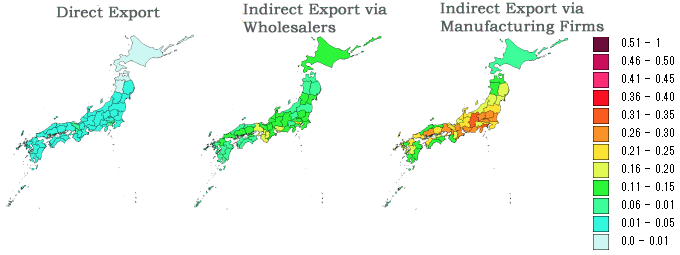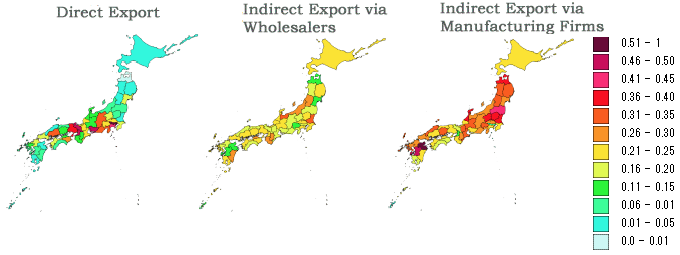Trends in anti-globalism and academic research
Looking back on 2016, it was a year of much discussion on anti-globalism. Widening income inequality and the problem of unemployment were the chief catalysts for the debate, which targets the immigration problem and globalization caused by trade deregulation. The United Kingdom's vote to leave the European Union and the results of the U.S. presidential election are among the signs that popular opinion has shifted toward protectionism. On the national level, however, countries have benefited greatly from globalization. In academia, as well, the advantages of globalization have been shown both theoretically and empirically. Based on the above, Japan has been working to adopt policies promoting inward foreign direct investment and conclude free trade agreements such as the Trans-Pacific Partnership (TPP).
RIETI has been conducting academic research for making evidence-based policy proposals, and studying the impacts of globalization in both the International Trade and Investment program and the Regional Economies program. At the Impact of Inward FDI and its Promotion for Japan's Economic Growth symposium held in March 2015 and co-hosted by METI and RIETI, topics including spillover of sophisticated technologies and new know-how, innovation creation, and promotion of higher value added from accumulated technologies were discussed. In March 2016, RIETI's Regional Economies program hosted the policy symposium on Frontier of Inter-firm Network Analysis: Power of network and geographical friction in which participants discussed the effects of reducing geographical frictions including globalization from the perspective of inter-firm networks.
Among the trends in academic research, mechanisms of inter-industry trade based on comparative advantage and intra-industry trade based on economies of scale and "love of variety" are shown in trade theory and new trade theory. In "new" new trade theory, trade models that consider firm heterogeneity have been constructed, and the mechanisms of firm turnover, increases in productivity, and rising income inequality have been identified. According to these models, as trade barriers fall, resources are allocated more efficiently and people's economic welfare improves. Many scholars support the idea that we can enjoy benefits from trade, and we should address rising income inequality with a redistribution function. There remains a very important point in the debate on how exactly to redistribute, but here I would like to offer one more perspective on the benefits of trade as discussed in the symposium mentioned above.
Perspective of inter-organizational networks
"New" new trade theory is closer to reality than some others in that it considers differences in productivity at the various firms, but it does not account for interactions between firms. Business activity, however, is built upon elaborately intertwined inter-organizational networks and becomes impossible if these relationships are disrupted. As things now stand, production networks span the globe, and it has been shown that a shock in one region propagates to the entire world. The flip side of risk in such a global network is that businesses benefit greatly during normal times.
In any inter-firm transaction, obviously, a business has a counterpart. As globalization advances, the business has more choices in whom it trades with, giving it the possibility of trading with a better partner. Bernard, Moxnes and Saito (2015) confirm that as geographical barriers decline and the cost of building inter-firm networks falls, firm performance improves. It has also been demonstrated by Carvalho, Nirei, Saito and Tahbaz-Salehi (2016) that changes in firm performance ripple out through the network, where the shock is amplified. In other words, trade advantages are not limited to firms directly engaged in trade, but have an indirect impact on their own trading partners. Very few firms are involved directly in the trade, but a very large number are indirectly involved. Therefore, many firms enjoy trade advantages without even noticing them. Figure 1 shows the ratio of manufacturing firms that are involved directly in export, those involved indirectly through wholesalers, and those through other manufacturing firms. Figure 2 shows the ratio of employees in manufacturing who are involved directly in export, those involved indirectly through wholesalers, and those through other manufacturing firms. These figures show that many firms are involved in trade (Note 1).


The advantages of globalization are not limited to production networks. Inter-organizational networks are extremely important in knowledge creation activities as well. As a series of research efforts by Joseph Schumpeter indicate, combining different knowledge is an important element spurring major innovations. Silicon Valley, for example, attracts people from all over the world. It is well known that when these people bring heterogeneous knowledge together, the result is higher productivity. Empirically, research by Ottaviano and Giovanni (2006) measured productivity in different regions of the United States and found a positive correlation between productivity and diversity within the region; research by Østergaard et al. (2011) found that the more diverse a firm is, the greater is its productivity. Saito and Yamauchi (2015) showed that there is a strong relationship between inventors' mobility and organizations' productivity by analyzing a database of patent inventors. As heterogeneous knowledge between inventors becomes shared knowledge over time, it is important to create a mechanism to secure the diffusion of heterogeneous knowledge.
Worker mobility is low in Japan and the probability of heterogeneous knowledge combining because of a transfer would seem to be much lower there than in countries such as the United States. However, the ratio of collaborative research between organizations as seen in patent data is far and away higher than in any other country (Figure 3). Long before the importance of open innovation was identified, Japan seems to have developed mechanisms to combine heterogeneous knowledge domestically. Our recent research found that the more a firm participated in these kinds of networks, the better the patents it produced. An analysis of global collaborative research networks, however, showed that while there are very tight domestic networks in Japan, there are very limited connections with partners abroad. This could encumber knowledge productivity. As the anti-globalization debate goes forward, it is important to consider what way of globalization from the perspective of networks is better.

[Click to enlarge]


